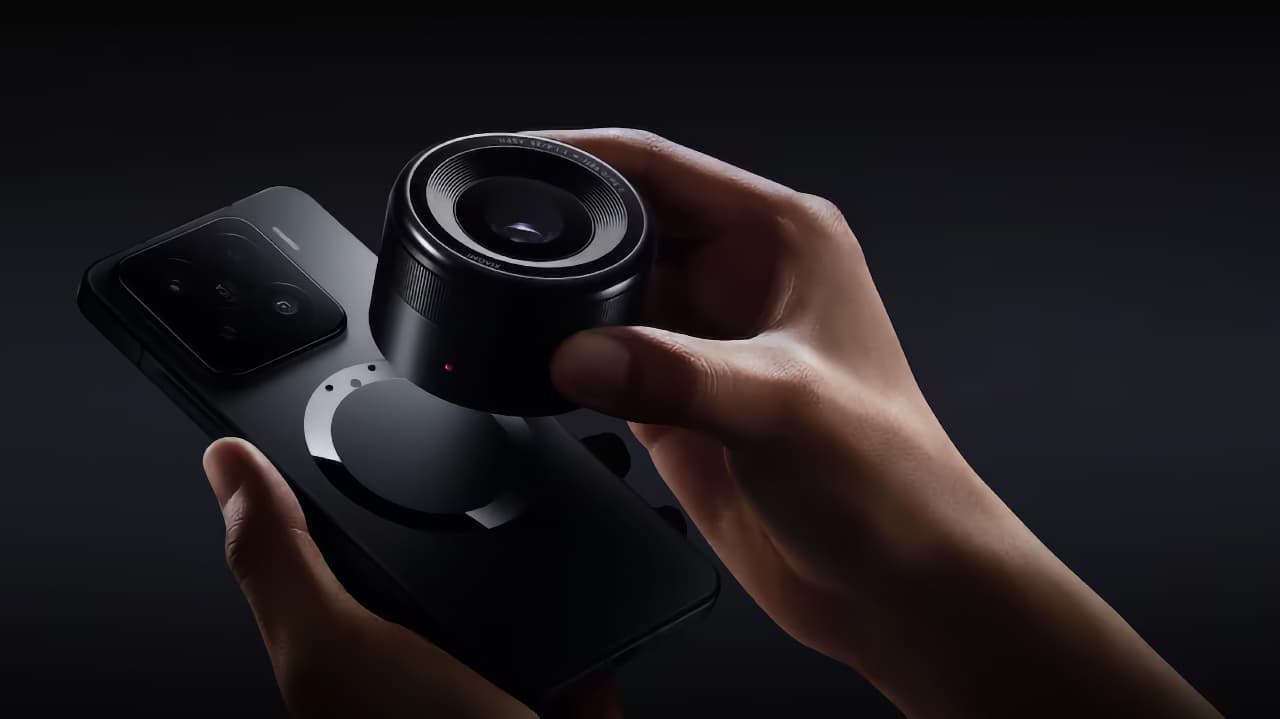
MWC 2025 has just concluded in Barcelona. While hardly a vintage edition of the world's biggest mobile phone show, there were some interesting new camera concepts on display, with the Xiaomi Modular Optical System attracting particular attention.
As companies look to put clear blue water between themselves and their competitors in increasingly crowded markets, we’re starting to see some interesting design concepts and products being unveiled. The Sigma BF announced at CP+ last week was one of those curious outliers in that it looked like a phone but is actually a camera. And at MWC we had two phones that went the other way and wanted very very much to be used as proper interchangeable lens cameras.
We’ll get to the intriguing Xiaomi Modular Optical System, but first it’s also worth talking about the Realme concept.
Realme concept phone
Realme’s main aim at MWC was to launch its new 14 pro series into Europe, but it attracted more headlines for its interchangeable lens concept phone. And these are no mini engineered dinky smartphone lenses either, these are full on Leica M-Mount lenses that screw onto a specially designed camera island / lens mount on the back of the phone.
The concept phone has been designed to work with two lenses, a 73mm portrait and a 234mm telephoto, though of course the phone doesn’t have the power to drive the autofocus. According to those who tried it out in Barcelona, unsurprisingly the balance of the phone is a bit off when you strap a hulking bit of Leica glass on it. In the end you have to hold the lens rather than the phone, which makes operation of menus etc a bit tricky.
Remember the ill-fated RED Hydrogen? This feels like how we imagined that would turn out when we first read about it.
Xiaomi Modular Optical System
Perhaps these sort of limitations are why this sort of thing surfaces every now and then and then tends to drop away again. Xiaomi did something very similar three years ago, and this year tried again with the newly introduced Modular Optical System. This looks like it might get a bit more traction in the market too, as it takes a custom version of its Xiaomi 15 smartphone and adds a ring of magnets in the centre of the phone to which users can attach a lens module.
Crucially the lens includes its own Micro Four-Thirds sensor which communicates wirelessly with the host phone via a 10Gbps optical transmission system dubbed LaserLink. This is located between two pogo pins that supply the power for the lens
The lens Xiaomi was showcasing the phone with at the show was a 35mm unit with an aperture of f/1.4 containing a 100-megapixel 4/3-type sensor. Xiaomi promises computational prowess unattainable with regular cameras thanks to the number of chips that are stuffed into modern Android phones as much as anything, and 16 stops of dynamic range.
There are no firm indications that the phone will go into production as yet, but the concept is undeniably an interesting one. The lens can be much smaller than conventional glass while still providing a hugely elevated optical performance, and that coupled with the central mounting mitigates many of the balance problems that something like the Realme system has. Plus, of course, that ultra low latency transmission system could be used to drive other accessories such as additional on-device processing.
Again, even this is not wholly new. Sony tried the same thing with the QX10 and QX100 clip on lenses, but Xiaomi’s system seems to have been remarkably well thought out and the all-important design looks top-notch. All in all we’d be very surprised if there wasn't;t more than one company now looking at what Xiaomi has produced and are now rapidly retro-engineering their own version.
Tags: Production mobile filmmaking


Comments